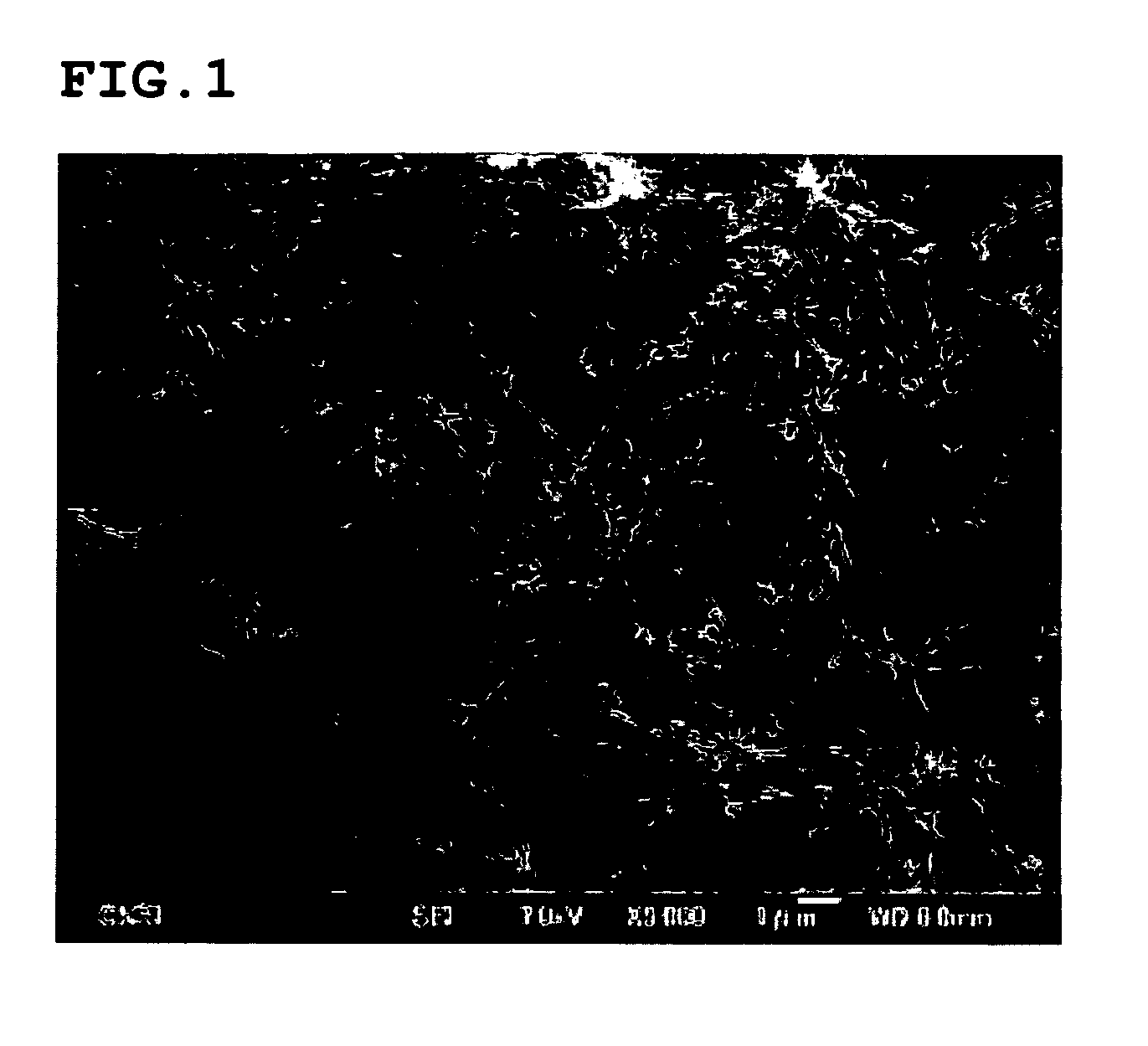Recycled composite material
a composite material and recycled technology, applied in combination recording, record information storage, textiles and paper, etc., can solve the problems of invariably degrading the intrinsic properties of the original polymer material, the material obtained by this approach cannot be greatly enhanced, and the corrosion resistance and mechanical strength of the material are poor, etc., to achieve good electric conductivity, good electric conductive paths, and easy preparation
- Summary
- Abstract
- Description
- Claims
- Application Information
AI Technical Summary
Benefits of technology
Problems solved by technology
Method used
Image
Examples
examples
[0128]Hereinafter, this invention will be illustrated in detail with practical examples. However, it is to be understood that the invention is not limited thereto.
[0129]The respective physical properties illustrated later are measured by the following protocols.
[0130]First, a photograph of pulverized product was taken with SEM. On the taken SEM photo, only carbon fibrous structures with a clear contour were taken as objects to be measured, and broken ones with unclear contours were omitted. Using all carbon fibrous structures that can be taken as objects in one single field of view (approximately, 60-80 pieces), about 200 pieces in total were measured with three fields of views. Contours of the individual carbon fibrous structures were traced using the image analysis software, WinRoof™ (trade name, marketed by Mitani Corp.), and area within each individual contour was measured, circle-equivalent mean diameter of each individual carbon fibrous structure was calculated, and then, the ...
PUM
| Property | Measurement | Unit |
|---|---|---|
| diameter | aaaaa | aaaaa |
| mean diameter | aaaaa | aaaaa |
| diameter | aaaaa | aaaaa |
Abstract
Description
Claims
Application Information
 Login to View More
Login to View More - R&D
- Intellectual Property
- Life Sciences
- Materials
- Tech Scout
- Unparalleled Data Quality
- Higher Quality Content
- 60% Fewer Hallucinations
Browse by: Latest US Patents, China's latest patents, Technical Efficacy Thesaurus, Application Domain, Technology Topic, Popular Technical Reports.
© 2025 PatSnap. All rights reserved.Legal|Privacy policy|Modern Slavery Act Transparency Statement|Sitemap|About US| Contact US: help@patsnap.com



